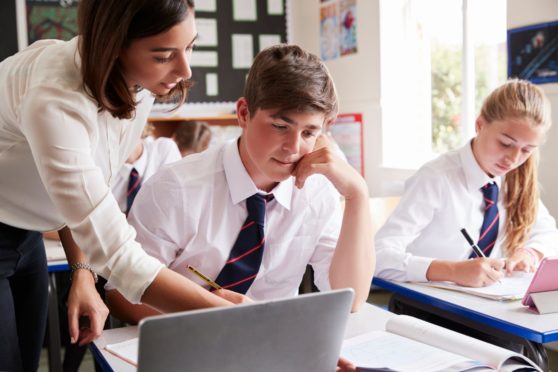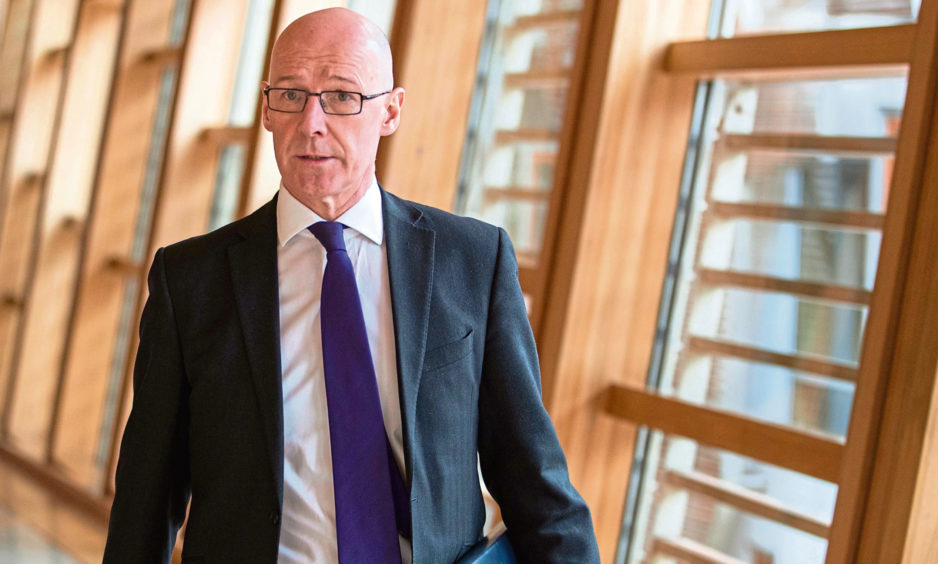Council leaders in Tayside and Fife are working to finalise plans for reopening schools full-time in August as government advisers say pupils will not have to socially distance.
The announcement, outlined in a new report, said primary and secondary school pupils will also not be required to wear face coverings, unless they choose to do so.
Parents and campaigners have welcomed the decision but have called for more clarity over the plans as children return to classrooms in less than a month.
As schools, classrooms and playgrounds will look very different in the “new normal”, we take a look at how the plans set out in the report will impact teachers and pupils.
Is guidance the same for primary and secondary pupils?
The Scottish Government’s education advisory group recommends pupils will not need to socially distance when schools return.
The report warns the evidence is less clear on relaxing physical distancing for “older pupils”, however the guidance applies to both primary and secondary pupils.
Experts said the benefits of all children returning to school full-time outweigh the dangers “on the balance of known risks”.
Will teachers have to wear face masks?
Social distancing must remain in place for adults within the school setting, as the report advised teachers and staff should stay two metres apart from pupils and each other.
Teachers must wear face coverings when they are required to be closer than this to any child for more than 15 minutes.
But Janis McCulloch, a mother-of-two from Dunfermline and national campaigner with 5050inschools, said more clarity is needed as teaching staff and education bosses have very little time to put plans in place.
It will be very difficult for teachers to maintain the two metre distance from pupils either because classroom space won’t allow it or for younger pupils who will be struggling with the concept of being away from their parents and may need more support.”
She said: “The public health crisis presents serious and significant challenges across all elements of our day-to-day lives.
“While it is good to have guidance for returning to school, it is important to note that education staff are on holiday and will have just two in-service days to prepare for welcoming pupils back from an absence that directly or indirectly, will have been traumatic for them.
“The announcement today is welcome but there are a number of issues that remain unclear.
“It will be very difficult for teachers to maintain the two metre distance from pupils either because classroom space won’t allow it or for younger pupils who will be struggling with the concept of being away from their parents and may need more support.
“The 50/50 campaign is disappointed that four out of our five asks have not been reflected adequately in this updated guidance and would hope this is merely a first step in preparing for the return to nursery and school.”
‘High risk’ activities to be banned in school
Teachers have been asked to avoid “large gatherings” which means activities such as assemblies, choirs and drama classes may not be introduced right away due to the “high risk” they present.
As a result, schools will look very different and councils are working to incorporate the new guidance into their back-to-school plans.
Many councils in Scotland have banned children from sharing equipment, books and toys as advisers urge schools to limit unnecessary contact.
Council leaders in Tayside and Fife have yet to announce whether they will follow in prohibiting items such as pencil cases.
Angus, Dundee, Perth and Fife Councils have said they are using the new government advice to shape their reopening plans.
A Dundee City Council spokesperson said: “The council and schools are working to ensure that pupils can return from August 12, if it is safe to do so.
“The safety of pupils and staff is paramount.
“This guidance, and further information that will come from the Scottish Government, will be crucial in developing our planning.
“The council will keep families informed about progress to reopen schools through its website and social media channels.”











